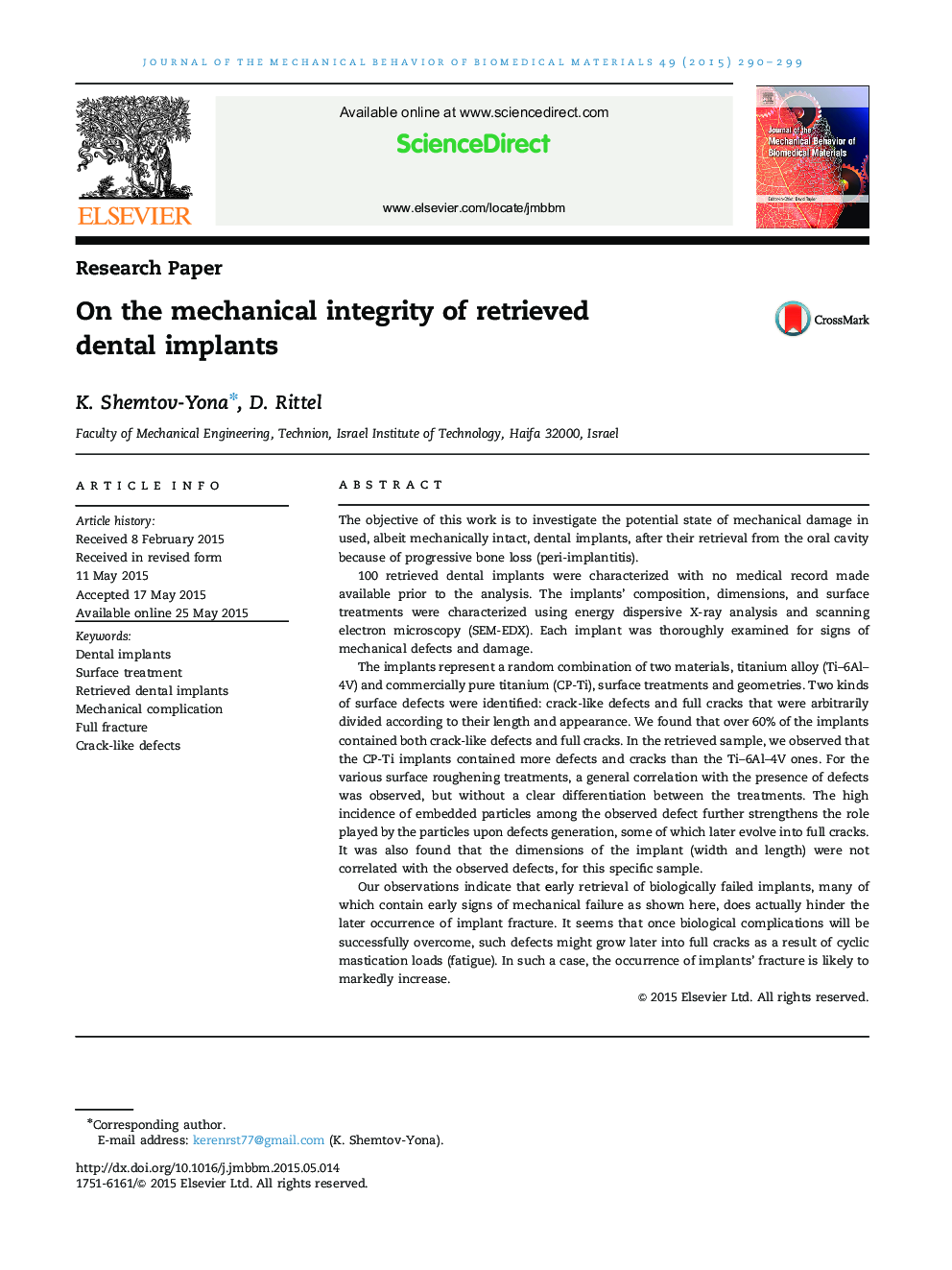| Article ID | Journal | Published Year | Pages | File Type |
|---|---|---|---|---|
| 810603 | Journal of the Mechanical Behavior of Biomedical Materials | 2015 | 10 Pages |
•100 biologically failed implants were examined for signs of mechanical defects.•62% of the implants contained crack-like defects and full cracks.•More CP-Ti implants contained defects than the Ti–6Al–4V ones.•Implant width and length did not correlate with the observed damage.•Surface roughening by grit blasting was correlated with defects.•Embedded particles are linked to the generation of surface defects evolving into full cracks.•Implants’ fracture incidence will increase with reduced rate of biological complications.
The objective of this work is to investigate the potential state of mechanical damage in used, albeit mechanically intact, dental implants, after their retrieval from the oral cavity because of progressive bone loss (peri-implantitis).100 retrieved dental implants were characterized with no medical record made available prior to the analysis. The implants’ composition, dimensions, and surface treatments were characterized using energy dispersive X-ray analysis and scanning electron microscopy (SEM-EDX). Each implant was thoroughly examined for signs of mechanical defects and damage.The implants represent a random combination of two materials, titanium alloy (Ti–6Al–4V) and commercially pure titanium (CP-Ti), surface treatments and geometries. Two kinds of surface defects were identified: crack-like defects and full cracks that were arbitrarily divided according to their length and appearance. We found that over 60% of the implants contained both crack-like defects and full cracks. In the retrieved sample, we observed that the CP-Ti implants contained more defects and cracks than the Ti–6Al–4V ones. For the various surface roughening treatments, a general correlation with the presence of defects was observed, but without a clear differentiation between the treatments. The high incidence of embedded particles among the observed defect further strengthens the role played by the particles upon defects generation, some of which later evolve into full cracks. It was also found that the dimensions of the implant (width and length) were not correlated with the observed defects, for this specific sample.Our observations indicate that early retrieval of biologically failed implants, many of which contain early signs of mechanical failure as shown here, does actually hinder the later occurrence of implant fracture. It seems that once biological complications will be successfully overcome, such defects might grow later into full cracks as a result of cyclic mastication loads (fatigue). In such a case, the occurrence of implants’ fracture is likely to markedly increase.
